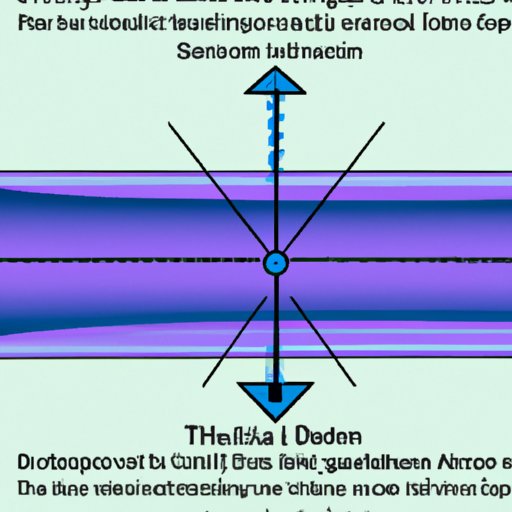Introduction
Time dilation is an interesting phenomenon that has been extensively studied in the fields of physics and mathematics. In basic terms, it refers to the fact that time passes more slowly for objects that are moving at high speeds relative to those that are stationary. This effect was first predicted by Albert Einstein’s theory of special relativity, and has since been observed and confirmed in numerous experiments. In this article, we will explore what time dilation is, how it works, and its implications for our universe.

Exploring the Phenomenon of Time Dilation
To understand time dilation, it is important to first examine the physics behind it. According to Einstein’s theory, time and space are not separate entities, but rather part of a single four-dimensional fabric known as space-time. As an object moves faster through space-time, time appears to slow down from the perspective of an observer who is stationary. This effect is known as time dilation.
The effects of time dilation can be observed in everyday life. For example, astronauts who spend extended periods of time in space experience less aging than those who remain on Earth. This is because they are moving at a much higher speed relative to those on the ground, so their time is passing more slowly.

A Look at the Mathematics of Time Dilation
In order to accurately describe and measure the effects of time dilation, mathematicians have developed equations to calculate the differences in time experienced by two observers. These equations are based on Einstein’s theory of special relativity, which states that the laws of physics remain the same regardless of the reference frame in which they are measured. By using these equations, we can determine the amount of time dilation between two points in space-time.
One of the most famous equations used to describe time dilation is the Lorentz transformation. This equation takes into account the effects of both velocity and acceleration on time dilation. It states that the amount of time dilation is proportional to the square of the difference in velocities between two observers. This equation has been confirmed in numerous experiments, and is widely accepted as one of the most accurate ways to measure the effects of time dilation.
Understanding the Implications of Time Dilation in Relativity Theory
Time dilation has a number of implications for the way we view the universe. One of the most significant implications is that time is relative, meaning that different observers may experience different amounts of time depending on their reference frames. This means that time itself is not absolute, but depends on the observer’s point of view.
Another implication of time dilation is that the speed of light is constant in all reference frames. This means that no matter how fast an object is moving, the speed of light will always remain the same. This has been verified in numerous experiments, and is one of the cornerstones of modern physics.
Conclusion
Time dilation is an interesting phenomenon that has been extensively studied in the fields of physics and mathematics. It is a consequence of Einstein’s theory of special relativity, and has implications for the way we view the universe. By examining the physics and mathematics behind time dilation, we can gain a better understanding of its effects on our universe.
Overall, time dilation is an important concept that has been studied for over a century. It is one of the cornerstones of modern physics, and its implications for the way we view the universe are profound. By understanding time dilation, we can gain a greater appreciation of the dynamics of our universe.
(Note: Is this article not meeting your expectations? Do you have knowledge or insights to share? Unlock new opportunities and expand your reach by joining our authors team. Click Registration to join us and share your expertise with our readers.)
